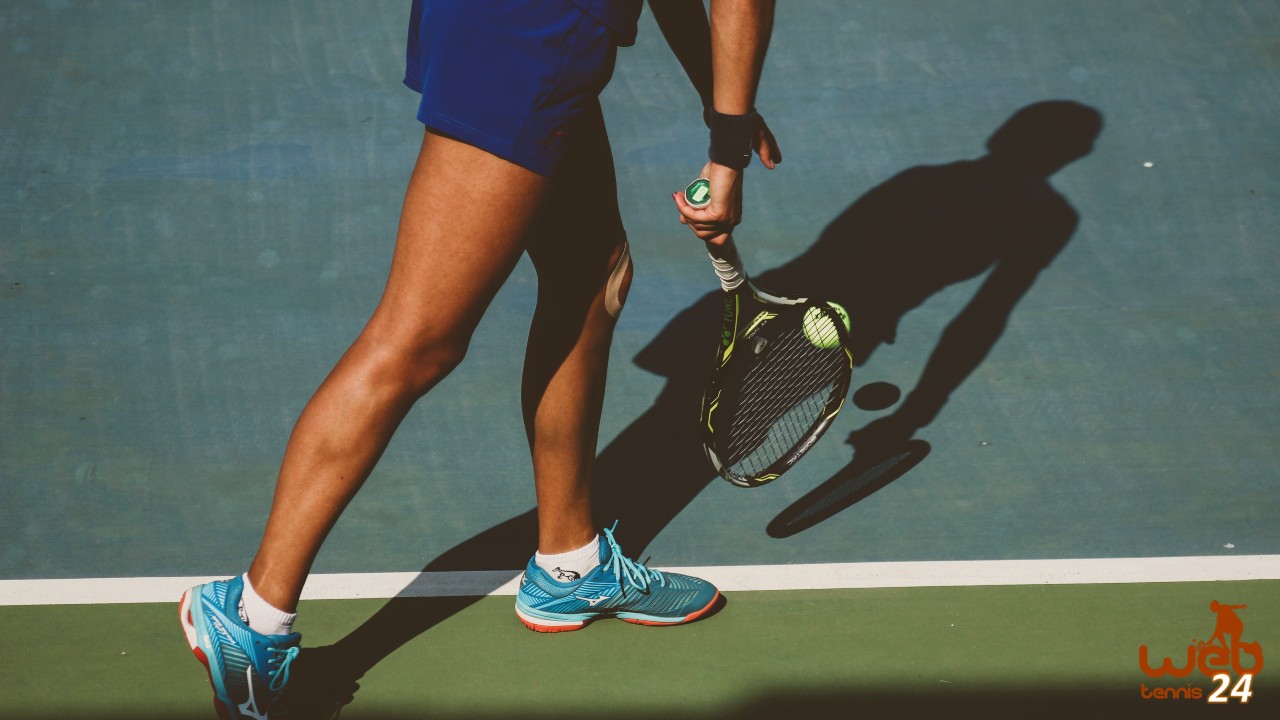Below I’ve highlighted a few points that will not only give you more spin, but also a better understanding of what it takes to make your serve consistent and harder to return.
But first… why do you need spin on your serve?
The more rotation your outgoing ball has, the more air pressure is created on top of it that pushes it down. This allows you to swing harder and higher, knowing that the ball will come into the court due to the spin effect.
Your ball’s rotation also makes it more difficult for your opponents to control their return.
Understanding and creating the “slice” effect on your serve:
 – I’ve always pictured the ball as the face of a clock (see graphic). In this case, to impart the slice on your serve, you should swing at the back of the ball from just above 8 o’clock towards under 2 o’clock. That will send your ball spinning more sideways and as a result, it will stay low right after the bounce.
– I’ve always pictured the ball as the face of a clock (see graphic). In this case, to impart the slice on your serve, you should swing at the back of the ball from just above 8 o’clock towards under 2 o’clock. That will send your ball spinning more sideways and as a result, it will stay low right after the bounce.
– To be able to brush for slice, you should toss the ball slightly more towards your dominant side (right if you are right-handed). This should allow you to swing up and away from yourself.
Understanding and creating the “kick” effect on your serve:
– If the ball would be seen as the face of a clock, to hit a kick serve you should swing from 7 toward 1 o’clock on the back of it. The result will be a ball rotating almost like a wheel as it travels through the air.
– For brushing the back of the ball in a low to high trajectory, the server must toss it just over the head and slightly above the non-dominant shoulder.
The toss for the kick serve is higher than the one of a slice serve. It gives the player more time to bend the knees and push up into the ball, which is hit on the downfall.
Both serves are important to learn for any player:
- The slice is great for pushing the returner wide (if hit close to the sideline on the deuce side) or jamming the player (make it curve into the body). It is also good for serve-and-volley because the low bounce of the slice serve will prevent the returner from hitting down at the approaching player’s feet.
- The kick serve can be effective on clay courts, attacking the opponent’s weak wing or pulling the player wide on the ad side (if the server is right-handed – the opposite should be for left-handed players). Some serve-and-volley players use the kick to give them more time to get up to the net, but it should be used with caution because the high bounce of it can allow the returner to hit it back short at approaching the player’s feet.
Use the picture of a clock when practicing your serves to create great spin effects and make it more difficult for your opponents to return your serves.

Cosmin Miholca
Certified Tennis Coach
Check out my work at WebTennis24 where I share with you my best video tennis lessons, drills and tips for players, coaches and tennis parents.


Thanks for these tips Cosmin, particularly on the kick serve.
I’ve been slowly learning it for the past few months. It’s slowly coming but by far the hardest part is getting the right swing path.
Also, at the moment, I can get some topspin on my second serves, so the ball dips down into the court, but not enough kick when the ball moves sideways.
Any tips on how to do this?
Keep up the good work!
Thanks, Graham, for the kind words! I appreciate it.
To get more kick after the bounce, it has to do with the racquet head acceleration – basically, the faster you swing the more energy will the ball have to jump up off the ground.
Keep the wrist loose through the contact. Lower the strings tension if you want to get more power overall.
Have fun! 🙂
Hi Cosmin
Thank you so much for sharing this information.
How long will it take to master the slice serve.
Hi Abnashi!
The slice serve, just like any skill, takes lots of practice to master. How much practice? It all depends on your athletic abilities, the time you put into practice, and most importantly making sure that your technique is correct.